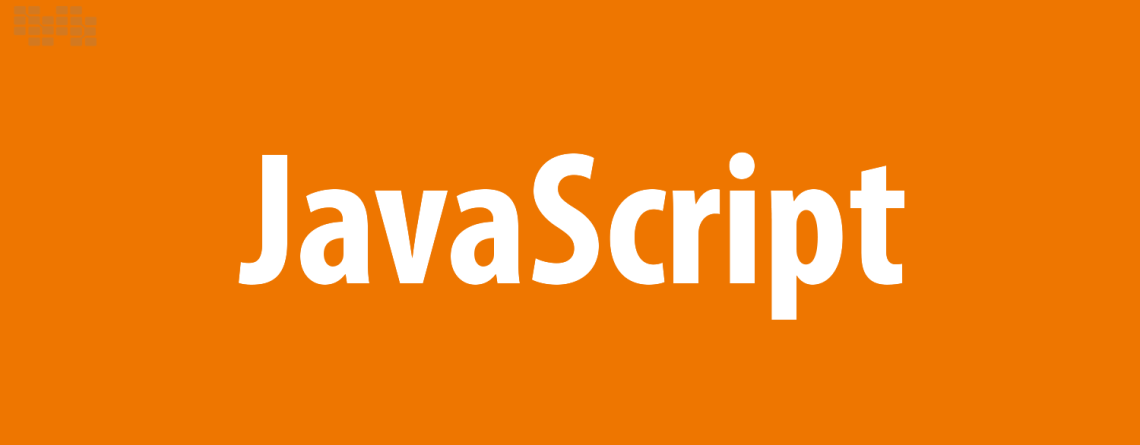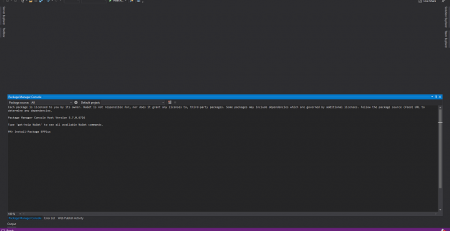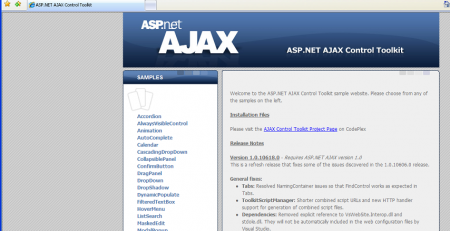Is JavaScript a Functional Programming Language?
Over the past few years, functional programming has become more and more well-liked. Functional programming has experienced a resurgence among developers as a result of the adoption of its concepts in languages like Python and Java. Some contemporary languages, such as Clojure and Haskel, are almost entirely functional.
Multi-paradigm languages have always been a feature of JavaScript. JavaScript is a flexible programming language because it can support a variety of programming paradigms.
We’ll go into great detail about functional programming and its advantages in this article. We’ll examine the ideas that make functional programming a paradigm and discuss its application to JavaScript. The question of whether JavaScript is functional programming will also be discussed.
What is Functional Programming?
One of the many programming paradigms that developers use to make a wide range of applications is functional programming. Functional programming is distinct from other methods because it emphasizes the use of functions to write and organize your code.
Functions are just pieces of code that accept arguments as inputs and produce desired results as outputs. Functions give your code better modularity and reusability because they are created with the goal of completing a single task.
There are many characteristics that characterise functional programming, which we’ll go over in the following sections. One of its most distinguishing characteristics is that, in contrast to other programming paradigms, it forbids object mutation or shared states.
When using functional programming, each individual block of code is restricted to only achieving its intended goals. It uses closed functions rather than allowing object modification to arrive at a solution instead.
function showAlert(){ //function defintion
alert('Hello World!'); //create an alert
}
document.wirte('Return Type:' + showAlert()); //calling function and returing typeWhat Are the Benefits of Functional Programming?
By design, functional programming addresses many problems that plague earlier programming paradigms. This contributed to its rising popularity over procedural and object-oriented programming.
Let’s examine a few of these advantages in greater detail:
Integrity
Mutations are discouraged by functional programming principles, which removes a significant source of potential bugs and errors from your code.
If you find bugs in functional programming, they will be much simpler to identify and fix because they will only affect that function’s functionality. To find the error, you won’t have to search through your entire codebase.
Pure functions, or those that only use data within their defined boundaries, are another tool used in functional programming. This drastically lowers the likelihood of errors.
Comprehensibility
Pure functions are much simpler to understand than other OOP or procedural programming constructs because they don’t undergo mutation.
Functional programming makes it easy to structure your code because you only need to consider the scope of each individual function. In contrast to OOP, where you must be aware of encapsulation, class hierarchies, inheritance, polymorphism, and various other concepts, you can create a lot more modular and reusable code.
If you’re switching from OOP or procedural programming to functional programming, you might need to completely alter your way of thinking.
Durability
In functional programming, once a variable’s value has been declared, it cannot be changed. This both increases its immutability and guarantees that your program will be preserved throughout its entire run.
Static variables make your code more secure and long-lasting than other programming paradigms, if not by a significant margin. Despite the fact that functional programming languages may not be the most performant, these important advantages just might make up for it.
5 Features of Functional Programming
Functional programming has a number of characteristics that make it what it is, as we already mentioned. These features make sure that you aren’t just writing code that uses functions and calling it a day. Actually, you’re following the tenets of functional programming.
These are the top five characteristics of functional programming:
1. First-Class Citizens
Functions are treated as first-class citizens in functional programming. This means that you can use functions in a similar manner to how you would use variables: you can assign them a value, use them as arguments to other functions and as their outputs, insert them inside other functions, and so on.
In functional programming languages like JavaScript, functions are also referred to as first-class objects.
const sum = (x, y) => x + y; const resultSum = sum(1, 2); const sumAgain = (x, y, sum) => sum(x, y);
The functional programming paradigm is what enables languages like JavaScript to use functions in this manner.
2. Pure Functions
Pure functions are those that always produce the same result for a particular input. One of the most prevalent characteristics of functional programming is this referential transparency. Your code will be deterministic and simple to test and debug if it uses only pure functions.
Pure functions minimise any unintended side effects when writing code, such as changing variables, reassigning variables, etc., because they always return the same output for the same input.
The ‘sum’ function will always produce the same result for the same input as shown in the example below:
function multiply(a, b) {
return a * b;
}On the other hand, impure functions depend on data outside their intended scope, which causes data and objects to change. Look at the code below:
let count = 0; const increaseCount = (value) => count += value;
The function above is impure because the count variable was declared using let and thus can be reassigned.
Functional programming is made simple to comprehend, test, and reuse in other parts of your code in the future.
3. Higher-Order Functions
A function that can take another function as an argument or return another function as its output is referred to as a higher-order function. Higher-order functions are excellent for creating cleaner, more effective code and for separating various functionalities within your code.
Callback functions are another name for the functions that are used as inputs for higher-order functions.
You would already be utilising some higher-order functions while working with JavaScript, including reduce, filter, and map.
The example below shows higher-order functions in action:
const cars= ["Chevrolet", "Honda", "Hyundai", "Tesla"];
const sayHiToCars = cars.map(car => `Hello ${car}`);Developers can separate the logic from the data with the aid of higher-order functions. Multiple actions can be easily abstracted from one another, making it simple to write more complex functions.
4. Function Composition
Composition is the process of organising your functions so they cooperate to produce better and more effective results. It can be viewed as the procedure of fusing functions in a particular order to create new functions.
By using them as arguments for other functions or receiving them as outputs from other functions, you can further simplify your functions by composing them.
Function composition might look like this:
var compose = (f, g) => (x) => f(g(x));
It can take some practice for beginners to master function composition, a key competency in functional programming. But as soon as you start using it, you’ll discover that you can create code that is cleaner, more readable, and simpler to understand.
5. Immutability
You must actively follow the aforementioned guidelines if you want to guarantee immutability in JavaScript. Additionally, you’ll have to give up a few techniques you might be accustomed to, including push, unshift, fill, reverse, and more. In the section after this, we’ll go into more detail.
To maintain immutability in your code, if you have an object and want to add a new element to it without changing it, you must create a new object that is a copy of the original object.
const PC = {
cpu: 'AMD',
gpu: 'NVIDIA'
};
const newPC = PC;
PC.cpu = 'Intel';How to Apply Functional Programming in JavaScript?
After going over the aforementioned ideas, one might wonder what functional programming in JavaScript is. How exactly should functional programming ideas be applied to JavaScript? especially considering that JavaScript is a multi-paradigm programming language rather than strictly a functional one, as we’ve already mentioned.
Let’s delve a little deeper into one of the most frequent questions JavaScript developers have before we discuss using functional programming in JavaScript:
Is JavaScript a Functional or Object-Oriented Programming Language?
JavaScript is a multi-paradigm language, as we covered above. It is not clearly a programming language that is either object-oriented or functional. That’s because JavaScript makes it simple to use any paradigm one chooses.
It can be demonstrated that JavaScript combines aspects of functional and OOP programming. You can perform any type of OOP-based computation in it and use objects and prototypes. Additionally, it supports the use of first-class functions and immutable objects.
Like many other languages, JavaScript is adaptable to a variety of programming paradigms. Which paradigm is more appropriate for the current issue is up to the developer.
What Is Functional Programming in JavaScript?
Some built-in JavaScript functions give the language a functional programming feel. Array.prototype.join, array.prototype.filter, and string.prototype.slice are a few of them.
Const declaration is a feature of JavaScript that, because it prevents data mutation, is also ideally suited to functional programming.
Let’s examine some additional JavaScript functions that can be used to implement functional programming:
Map
Each element of an array is mapped to a function by the map function, which also generates a new array based on the results of the function.
In order to use map, we must first declare a function in JavaScript. Once we have the new array, we can use map.
const triple = x => 3 * x; [1, 2, 3].map(triple); // result [3, 6, 9]
In this code, triple functions serve as mappers, taking each element of the original array as input, computing a return value, and using that value to instruct map to create the output array.
Filter
Based on a condition that is declared as a function, the filter function can be used to filter the values of an array.
To remove even values from an array, use the example below:
const filterEven = x => x % 2 === 0; [1, 2, 3].filter(filterEven); // result [2]
Concat
Concat can, as you might have guessed, create new arrays by adding new items to existing arrays. Concat is distinct from the push function in that push modifies the data, whereas concat is a pure function and does not.
[1, 2].concat([3, 4]) // result [1, 2, 3, 4]
Reduce
Based on a reducer function, the reduce function is used to condense an array to a single value. This reducer function retrieves the new value by taking each element of the array individually and adding the total value.
This process is continued until a single value is reached.
const sum = (accumulatedSum, arrayItem) => accumulatedSum + arrayItem [1, 2, 3].reduce(sum); // 6
Conclusion
Developers and organisations have embraced functional programming quickly, and for good reason. Functional programming has many advantages, particularly in JavaScript. You can quickly create code that is simpler to understand, has fewer side effects, and is simple to debug.
The purpose of this is not to imply that functional programming is the only type of programming. However, it definitely makes a lot of programming problems easier to solve. It makes sense that leading global technology companies like Google, Meta, Netflix, Uber, and others use JavaScript to create world-class user experiences for their clients.
Nile Bits is a great place to start if you’re also looking to hire JavaScript developers for your new project. Nile Bits developers are highly qualified experts who are among the best in their field. Additionally, Nile Bits provides them with excellent professional and interpersonal support, which boosts job satisfaction and reduces turnover.
Furthermore, hiring Nile Bits developers is much cheaper than traditional hiring, and you won’t even have to worry about things like payroll, benefits, and compliance.
To learn more about hiring JavaScript developers at Nile Bits and to give wings to your exciting new project, get in touch with us right away.










Leave a Reply